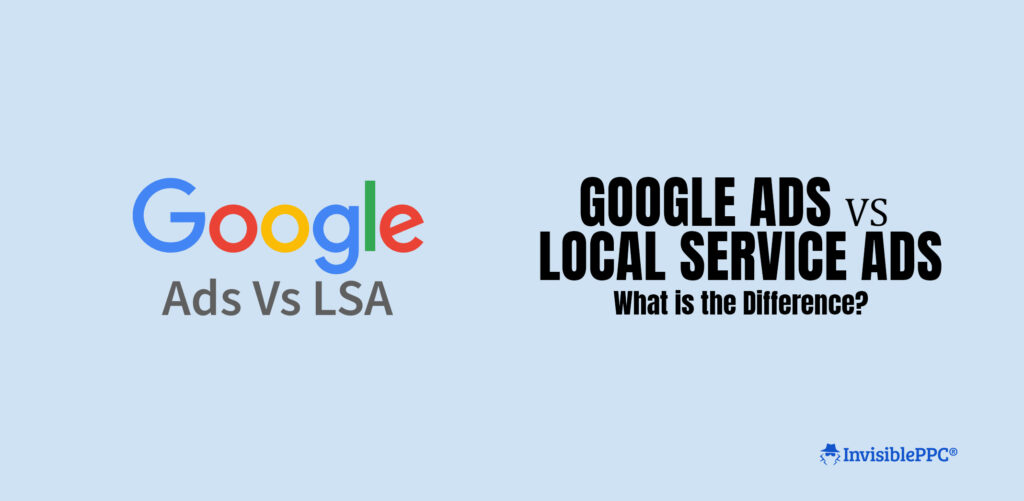If you have landed on this blog, you’re probably trying to make some smart choices about advertising your business.
In 2024, advertising decisions can make or break your marketing strategy, and selecting between Google Ads and Local Service Ads could be crucial.
But to select one, you need to know both and understand how they can impact your business uniquely.
Let’s break it down together and help you figure out which one is the best fit for your business.
What Are Local Service Ads (LSAs)?
Local Service Ads (LSAs), aka “Google Guaranteed” or “Google Screened” Ads, are designed specifically for service-area-based businesses and professionals aiming to connect with local customers. These ads show up at the very top of Google search results, making your business super visible when potential customers are searching for services you offer.
LSAs operate on a pay-per-lead model. This means you only pay when a customer contacts you through the ad. If that’s not enough, these LSAs allow you to verify the quality of leads and appeal to the ones where you feel the leads were not correct. Google is known to give your money back if the lead is not good. Plus, these ads come with a Google Guaranteed badge, building trust and credibility because Google has verified your business.
Benefits of LSAs:
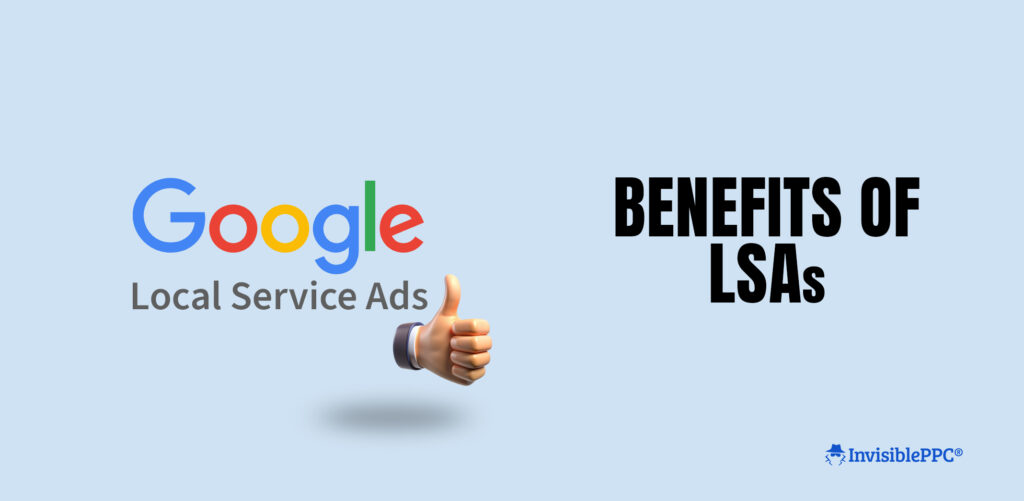
- High Visibility: Your business appears at the top of search results.
- Cost-Effective: You pay only for actual leads, not just clicks.
- Trustworthy: The Google Guaranteed badge boosts credibility.
- Simple Management: LSAs are easier to handle, especially for small businesses.
Drawbacks of LSAs:
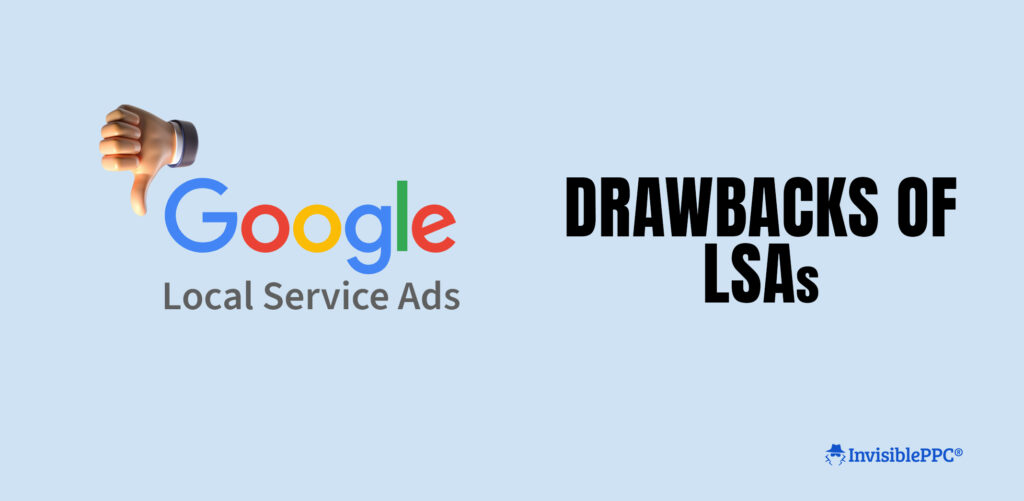
- Limited Scope: Available only for specific service-based industries.
- Less Control: Fewer options for customizing ad creatives and targeting.
What Are Google Ads?
Google Ads, on the other hand, allows you to create ads that appear when people search for specific terms related to your business. These ads can appear in Google search results, on websites, and even in YouTube videos.
Unlike LSAs, Google Ads operate on a pay-per-click (PPC) model. You pay each time someone clicks on your ad, regardless of whether it leads to a conversion. Google Ads offers extensive targeting options, allowing you to reach specific demographics, interests, and locations.
Benefits of Google Ads:
- Versatile Formats: Supports various ad types, including search, display, and video.
- Advanced Targeting: Target ads based on demographics, locations, and user behaviors.
- Wide Reach: Suitable for local and national campaigns.
- Detailed Analytics: Comprehensive reporting tools to track performance.
Drawbacks of Google Ads:
- More Costly: This can become expensive depending on keyword competitiveness.
- Complex Management: Requires regular monitoring and optimization.
Key Differences Between LSAs and Google Ads
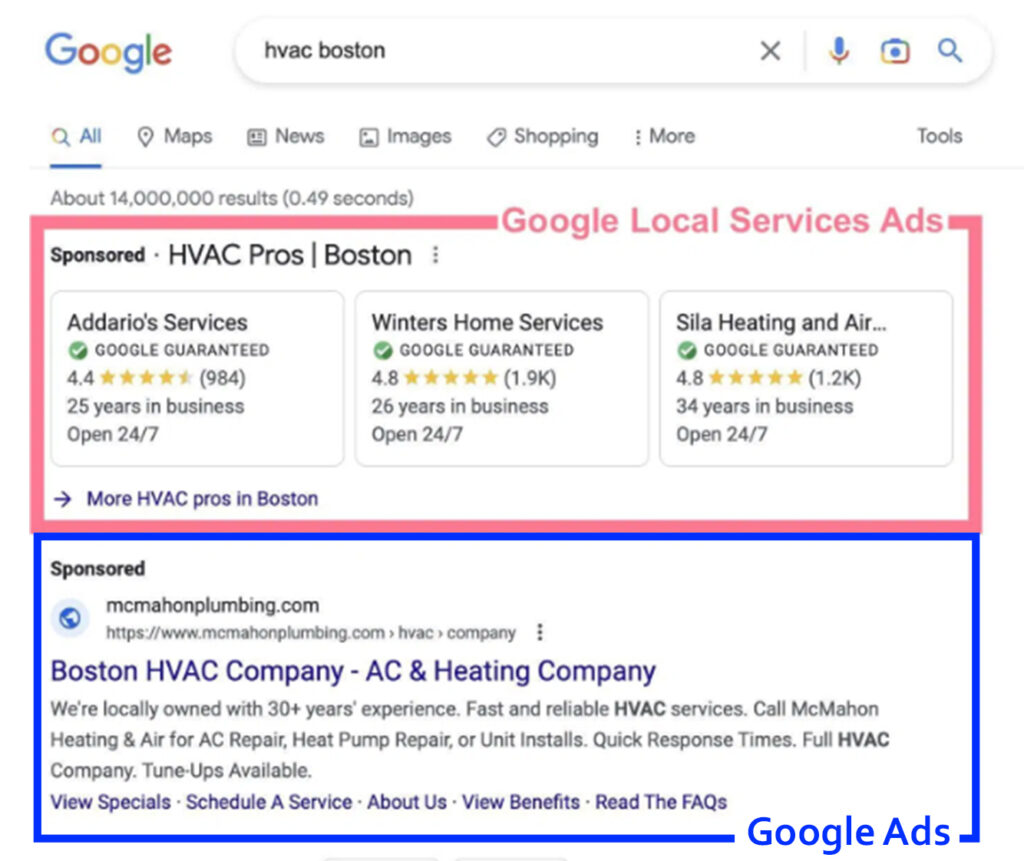
1. Pricing Models
LSAs: Use a pay-per-lead model, meaning you only pay when a customer contacts you through the ad. This is budget-friendly as your spending correlates directly with potential business opportunities.
Google Ads: Operate on a pay-per-click (PPC) model, where you pay each time someone clicks on your ad. This can provide more traffic but requires careful budget management to ensure a good return on investment.
2. Ad Placement
LSAs: Prominently displayed at the top of Google search results, making them highly visible. This prime placement helps attract immediate attention from searchers.
Google Ads: Can appear at the top of search results but also show ads on websites within Google’s display network and on YouTube videos. This broader placement increases your brand’s exposure across multiple platforms.
3. Targeting Options
LSAs: Focus on local targeting, which is ideal for service providers like landscapers, home inspectors, or general contractors looking to attract customers in specific areas.
Google Ads: Offer extensive targeting options beyond location, such as demographics, interests, and online behaviors, allowing for highly customized ad campaigns.
4. Trust and Credibility
LSAs: Feature a Google Guaranteed badge, which signifies that Google has verified your business. This can significantly increase customer trust and lead conversion rates.
Google Ads: Don’t include the badge but allow for various ad extensions to provide additional business information, helping build credibility in other ways.
Choosing the Right Ad Platform
When deciding between Local Service Ads (LSAs) and Google Ads, think about your business goals, budget, and target audience.
Goals
- Local Leads: If your primary aim is to generate local leads, LSAs are ideal due to their top-of-search placement and trust factor.
- Broader Reach: For broader reach, brand visibility, and complex targeting, Google Ads are the way to go.
Budget
- Cost-Effective: LSAs are cost-effective because you only pay for actual leads.
- Larger Budget: Google Ads can drive more traffic but may require a larger budget due to the pay-per-click model.
Audience
- Local Customers: LSAs are perfect for service-based businesses targeting local customers.
- Broader or Niche Audience: If your audience is broader or more niche, Google Ads’ extensive targeting options are more beneficial.
Integrating Local Service Ads and Google Ads
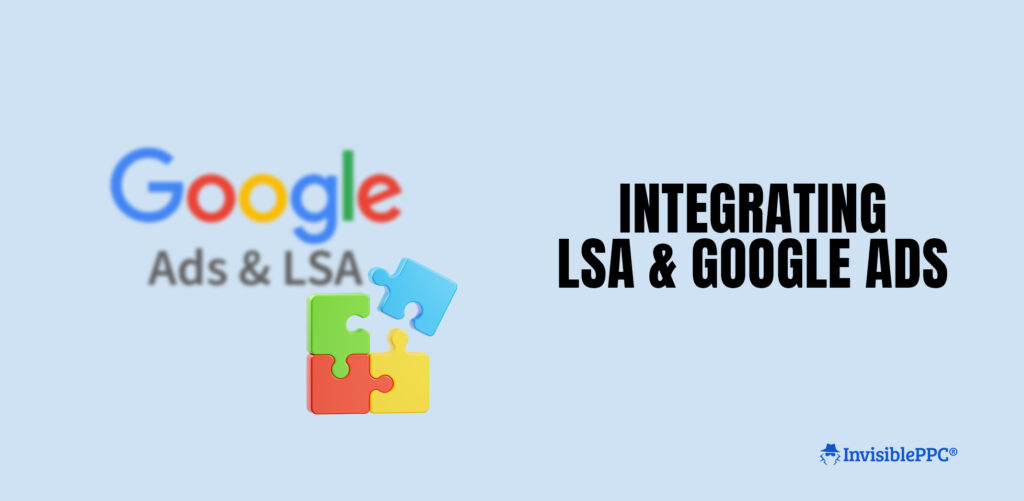
You don’t always have to choose one over the other. Depending on your needs, combining the two can maximize your advertising efforts.
How to Integrate both?
- Capture Local Leads with LSAs: Use LSAs to capture local, high-intent leads – people who are nearby and actively searching for your services.
- Expand Reach with Google Ads: Utilize Google Ads to reach a wider audience across different online platforms or focus on specific groups or behaviors.
- Analyze Performance Data: Analyze performance data from both platforms to refine your strategies, optimize your budget, and improve overall campaign effectiveness.
Remember, the right choice depends on your specific business needs, goals, and budget. Whether you’re looking for quality leads or hoping to boost online visibility, understanding the features and advantages of each platform will help you make informed decisions.
In most cases, instead of comparing Local Service Ads (LSAs) vs Google Ads, you can take advantage of both. LSAs are perfect for attracting local leads, while Google Ads have a wider targeted reach. Combining the platforms can enhance your strategy.
However, the decision to go to Google Ads, LSAs, or both requires effort, planning, and management.
We know it can be overwhelming, so we can help you simplify the process.
With InvisiblePPC, you can rest assured that all your ad campaigns will be planned, executed, and managed by professionals with years of experience and expertise. Check out our white-label Google PPC Services.
Are you all set to see your Ad campaigns yield amazing results?

